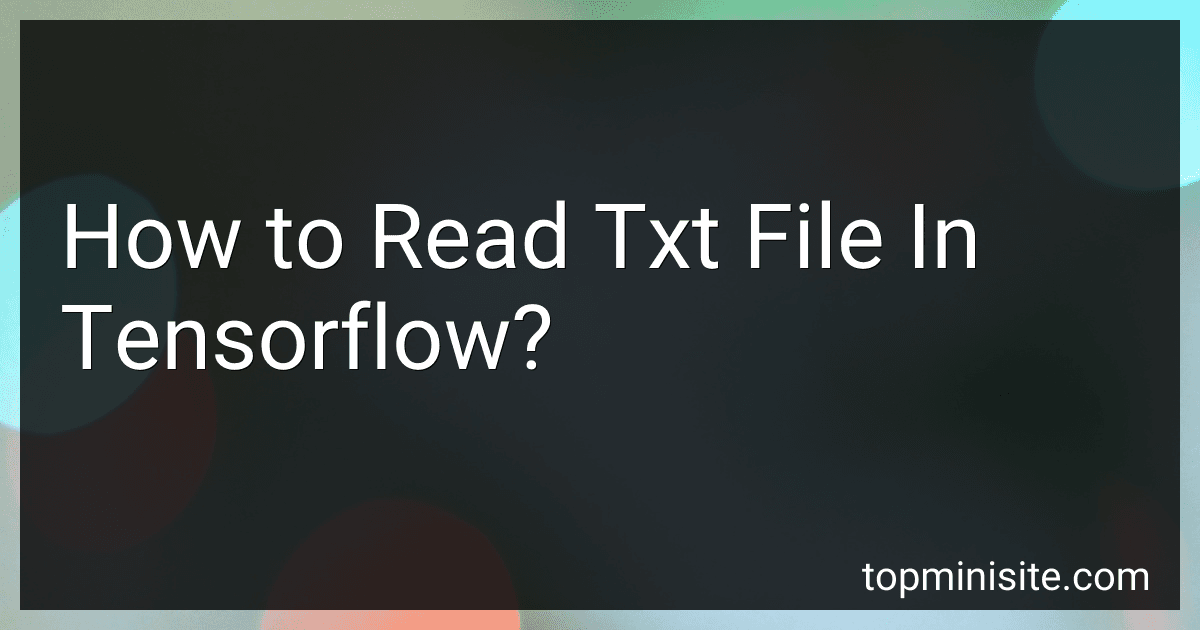Best TensorFlow Learning Resources to Buy in December 2025
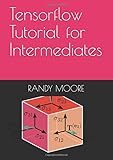
Tensorflow Tutorial for Intermediates


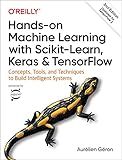
Hands-On Machine Learning with Scikit-Learn, Keras, and TensorFlow: Concepts, Tools, and Techniques to Build Intelligent Systems



TensorFlow and Keras for Beginners: A Practical Guide to Deep Learning


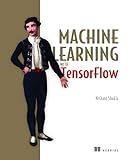
Machine Learning with TensorFlow


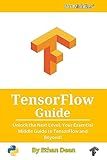
TensorFlow Guide: Unlock the Next Level: Your Essential Middle Guide to TensorFlow and Beyond!


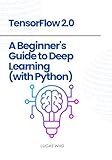
TensorFlow 2.0: A Beginner's Guide to Deep Learning (with Python)



TensorFlow MNIST | Read your own handwritten digit | Video Walkthrough Tutorial (58+ min.) with Source Code | Cuda Education


To read a text file in TensorFlow, you can use the TensorFlow IO library. First, you need to open the text file using Python's built-in 'open' function and then read its contents. After that, you can use the 'tf.io.read_file' function to read the text file as a TensorFlow tensor. This will allow you to further process and analyze the text data using TensorFlow's machine learning capabilities.
What is the recommended approach to read large txt files in TensorFlow?
The recommended approach to read large text files in TensorFlow is to use the tf.data.TextLineDataset class. This class allows you to create a dataset from text files by treating each line in the file as a separate example. You can then use the dataset object to create batches of examples, shuffle the data, and preprocess it before feeding it into your machine learning model.
Here is an example of how you can use the tf.data.TextLineDataset class to read a large text file:
import tensorflow as tf
Create a dataset from a text file
dataset = tf.data.TextLineDataset("path/to/your/text/file.txt")
Optional: Shuffle the dataset
dataset = dataset.shuffle(buffer_size=10000)
Optional: Preprocess the data
For example, you can use the `map` method to apply a preprocessing function to each example
dataset = dataset.map(preprocess_function)
Create batches of examples
dataset = dataset.batch(batch_size=32)
Iterate over the dataset
for batch in dataset: # Feed the batch into your model for training or evaluation pass
By using the tf.data.TextLineDataset class, you can efficiently read and process large text files in TensorFlow while taking advantage of TensorFlow's built-in data pipeline optimizations.
What is the significance of unicode decoding in reading txt files with TensorFlow?
Unicode decoding is crucial when reading text files with TensorFlow because it allows the program to interpret and process data accurately. Text data in a text file may contain various characters that require proper decoding to be correctly understood by the TensorFlow model.
Without proper Unicode decoding, text files with non-ASCII characters or different encoding formats may not be read correctly, resulting in errors or inaccuracies in the data processed by the TensorFlow model. Unicode decoding ensures that text data is converted into a standard format that can be effectively processed by the model, improving the accuracy and reliability of the analysis or prediction.
What is the recommended way to handle exceptions while reading txt files in TensorFlow?
When reading txt files in TensorFlow, it is recommended to use try-except blocks to handle exceptions. This can help catch any errors that may occur during the file reading process and ensure that the program does not crash.
Here is an example of how to handle exceptions while reading txt files in TensorFlow:
import tensorflow as tf
try: file_path = "file.txt" data = tf.io.read_file(file_path) # process the data except tf.errors.NotFoundError: print("File not found") except tf.errors.PermissionDeniedError: print("Permission denied to read file") except tf.errors.ResourceExhaustedError: print("Resource exhausted while reading file") except tf.errors.InvalidArgumentError as e: print(f"Invalid argument error: {e}") except Exception as e: print(f"An error occurred while reading file: {e}")
In this code snippet, we attempt to read the contents of a file using TensorFlow's tf.io.read_file function. If any exceptions occur during the reading process, we catch specific TensorFlow errors using tf.errors exceptions, as well as general exceptions using the base Exception class.
By handling exceptions in this way, we can gracefully handle errors that may occur while reading txt files in TensorFlow and respond accordingly.
